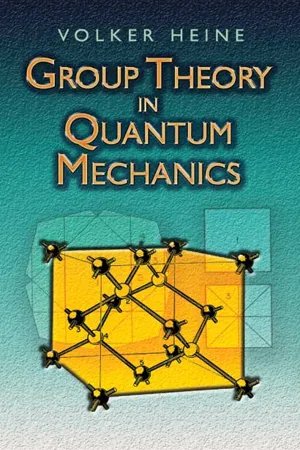
- 480 pages
- English
- ePUB (mobile friendly)
- Available on iOS & Android
About This Book
Geared toward research students in physics and chemistry, this text introduces the three main uses of group theory in quantum mechanics: (1) to label energy levels and the corresponding eigenstates; (2) to discuss qualitatively the splitting of energy levels, starting from an approximate Hamiltonian and adding correction terms; and (3) to aid in the evaluation of matrix elements of all kinds.
"The theme, " states author Volker Heine, "is to show how all this is achieved by considering the symmetry properties of the Hamiltonian and the way in which these symmetries are reflected in the wave functions." Early chapters cover symmetry transformations, the quantum theory of a free atom, and the representations of finite groups. Subsequent chapters address the structure and vibrations of molecules, solid state physics, nuclear physics, and relativistic quantum mechanics.
A previous course in quantum theory is necessary, but the relevant matrix algebra appears in an appendix. A series of examples of varying levels of difficulty follows each chapter. They include simple drills related to preceding material as well as extensions of theory and further applications. The text is enhanced with 46 illustrations and 12 helpful appendixes.
Frequently asked questions
Information
Table of contents
- Title Page
- Copyright Page
- Table of Contents
- PREFACE
- Chapter I - SYMMETRY TRANSFORMATIONS IN QUANTUM MECHANICS
- Chapter II - THE QUANTUM THEORY OF A FREE ATOM
- Chapter III - THE REPRESENTATIONS OF FINITE GROUPS
- Chapter IV - FURTHER ASPECTS OF THE THEORY OF FREE ATOMS AND IONS
- Chapter V - THE STRUCTURE AND VIBRATIONS OF MOLECULES
- Chapter VI - SOLID STATE PHYSICS
- Chapter VII - NUCLEAR PHYSICS
- Chapter VIII - RELATIVISTIC QUANTUM MECHANICS
- Appendix A - Matrix Algebra
- Appendix B - Homomorphism and Isomorphism
- Appendix C - Theorems on Vector Spaces and Group Representations
- Appendix D - Schur’s Lemma
- Appendix E - Irreducible Representations of Abelian Groups
- Appendix F - Momenta and Infinitesimal Transformations
- Appendix G - The Simple Harmonic Oscillator
- Appendix H - The Irreducible Representations of the Complete Lorentz Group
- Appendix I - Table of Wigner Coefficients (jj′mm′|JM)
- Appendix J - Notation for the Thirty-two Crystal Point-groups
- Appendix K - Character Tables for the Crystal Point-groups
- Appendix L - Character Tables for the Axial Rotation Group and Derived Groups
- GENERAL REFERENCES
- BIBLIOGRAPHY
- INDEX